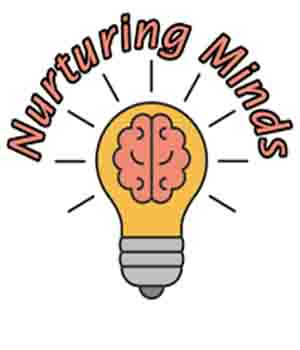As parents, we all want what’s best for our children, especially when it comes to their education. However, one size does not fit all when it comes to learning. Each child has a unique learning style, with their preferred way of taking in and processing information. By identifying your child’s dominant learning style, you can tailor their educational experience to their specific needs and strengths and this can make a world of difference in their academic success and overall well-being.
Identifying your child’s learning style is the first step towards tailoring their education to suit their individual needs and preferences. Here are some tips for parents to recognise and support their child’s learning style –

Visual Learners
Some children are visual learners, meaning they learn best and understand concepts better when they can visualise them through diagrams, visual aids, pictures, videos or demonstrations. If your child is a visual learner, you may notice that they enjoy drawing, doodling, and using colour in their work. To support visual learners, provide them with plenty of visual materials, such as charts, graphs, and videos, and encourage them to use colour coding to organise information.

Auditory Learners
Auditory learners absorb information most effectively through listening, meaning they learn best through listening and speaking. They thrive on lectures, discussions, and verbal instructions and you may notice that they enjoy listening to stories, music, and podcasts.
To support auditory learners, engage them in discussions, read aloud to them, and encourage them to explain concepts in their own words. Reading out loud and repeating things back can help cement their understanding.

Kinaesthetic Learners
Some children are kinesthetic learners, meaning they learn best through hands-on activities and movement. If your child is a kinesthetic learner, you may notice that they building models, acting things out and experiential activities appeal to their tactile nature. To support kinesthetic learners, provide them with plenty of opportunities for hands-on learning, such as experiments, role-playing, and outdoor activities.

Multimodal Learners: Many children are multimodal learners, meaning they learn best through a combination of visual, auditory, and kinesthetic methods. If your child is a multimodal learner, you may notice that they enjoy a variety of learning activities and approaches. To support multimodal learners, provide them with a range of learning materials and activities, and encourage them to use different strategies to understand and retain information.
Cultural Considerations: It’s also important for parents to consider cultural factors that may influence their child’s learning style. For example, children from collectivist cultures may prefer collaborative learning environments, while children from individualistic cultures may prefer independent study. By understanding your child’s cultural background and preferences, you can better support their learning style.
While most children use a blend of these styles, they usually have one dominant mode of learning. Here are some tips to identify your child’s strengths:
Visual Learners
- Tend to have neat handwriting and drawings
- Quickly recognise words by sight
- Follow directions better with illustrations or diagrams
- Become distracted by small movements around them
Auditory Learners
- Remember names, dates and trivia easily
- Hum, sing or talk to themselves while learning
- Prefer oral instructions over written ones
- Repeat things back in their own words
Kinaesthetic Learners
- Fidget or find reasons to move around while learning
- Struggle to sit still for long periods
- Use hands-on activities to understand abstract concepts
- Apply motor memory well when doing tasks
Once you’ve identified your child’s preferred learning channel, you can adapt your approach and their environment:
For Visual Learners – Use diagrams, flashcards, graphs, maps and illustrated books. Encourage colour-coding and visualisation techniques. Guide them to convert lessons and information into pictures and symbols in their mind.
For Auditory Learners – Encourage discussions, read out loud together, and turn lessons into songs or raps when possible. Use rhymes and rhythms to reinforce learning. Allow auditory learners to record themselves and listen back.
For Kinaesthetic Learners – Incorporate hands-on models, experiments and physical activities. Use role-play, building blocks and movement to explore new concepts. Give frequent breaks and opportunities to move around while learning.
Every child has immense potential. Understanding your child’s learning style is essential for their academic success and overall well-being. By tailoring the support they get to suit their individual needs, you pave the way for their growth and development. Stay flexible, engaged and celebratory of your child’s strengths as you navigate this journey together!


















